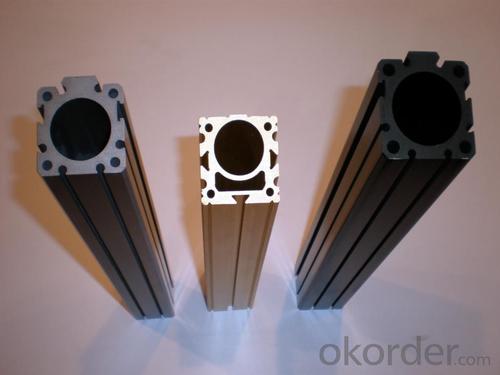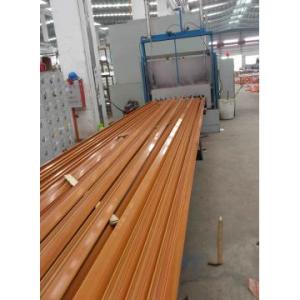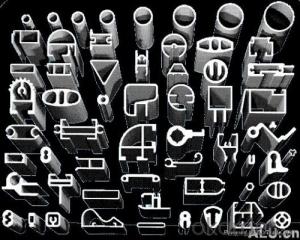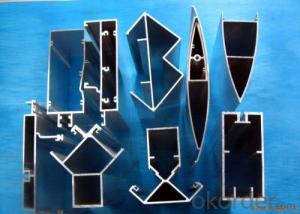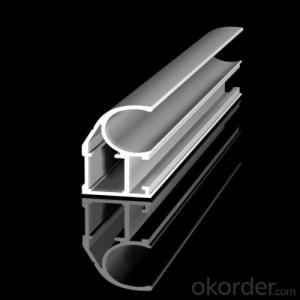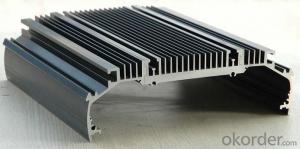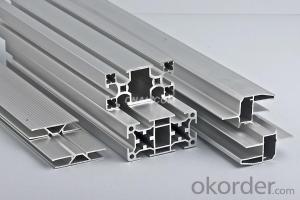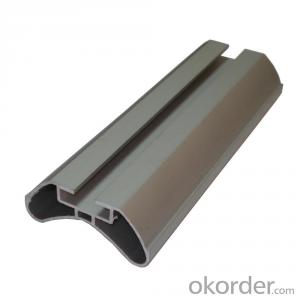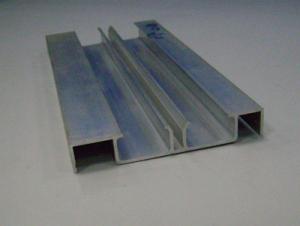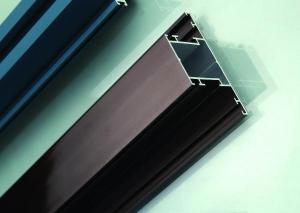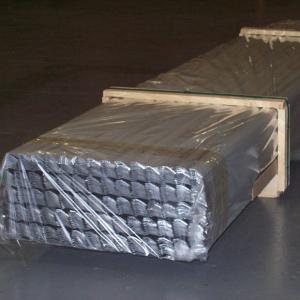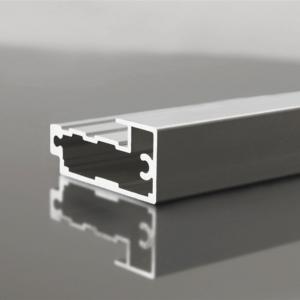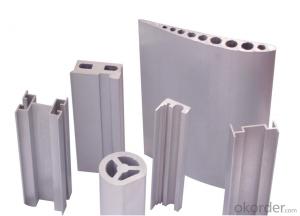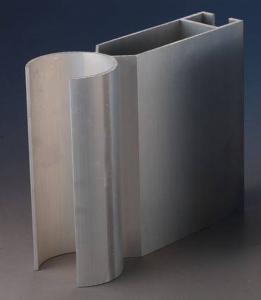Aluminum T-Slot Extrusion Profiles - Aluminium Profile Extrusion
- Loading Port:
- China Main Port
- Payment Terms:
- TT OR LC
- Min Order Qty:
- -
- Supply Capability:
- -
OKorder Service Pledge
Quality Product, Order Online Tracking, Timely Delivery
OKorder Financial Service
Credit Rating, Credit Services, Credit Purchasing
You Might Also Like
Quick Details
| Place of Origin: | Grade: | Temper: | |||
| Application: | Shape: | Alloy Or Not: | |||
| Model Number: | Brand Name: | Certificate:: | |||
| Surface Finish:: | alloy:: | Thickness:: | |||
| Max. Circumcircle:: | 300mm |
Packaging & Delivery
| Packaging Detail: | Aluminium profile pack into brown paper with protective plastic film or as per client's demand |
| Delivery Detail: | 15-30days |
Specifications
Alloy:6063,6061,6005 T5/T6
Finish:mill,anodized,powder coated,wood color;
Cutting,Drill,Punch,Deburr,Bend,Weld;
ISO certified
Aluminium Profile Extrusion
1. What kind of products and service we can provide:
- Aluminum Profile for construction, such as doors, windows, fence, screen, curtain wall, handrail, partition, wardrobe, greenhouse and sunroom, etc.
- Industrial Aluminum Profile for solar energy, LED, machinery, advertisement, transport, auto part, exhibit shelf, telecom. etc.
- Doors and Windows System, include sliding door, side hung window, tilt and turn window, etc.
- Machining for aluminum and S/S products: Cutting, drill holes, punch, milling, de-burr, chamfer, stretch bending, welding and so on;
- Stainless Steel Welded Tubes
- Engineering design and Consult
- Q: How do aluminum profiles compare to plastic profiles?
- Aluminum profiles generally offer greater strength, durability, and stability compared to plastic profiles. They can withstand higher loads and have higher resistance to heat, chemicals, and UV radiation. Additionally, aluminum profiles provide more design flexibility, as they can be easily machined, welded, and anodized to achieve desired shapes and finishes. However, plastic profiles are often more cost-effective and lighter in weight, making them suitable for certain applications where strength and rigidity are not critical. Ultimately, the choice between aluminum and plastic profiles depends on the specific requirements and constraints of the project.
- Q: Are aluminum profiles suitable for electrical applications?
- Aluminum profiles are well-suited for electrical applications due to their excellent electrical conductivity. This versatile and lightweight metal is a popular choice for various electrical components and systems. It can be used for electrical enclosures, heat sinks, bus bars, and other connectors. One of the main advantages of aluminum profiles in electrical applications is their high thermal conductivity. They efficiently dissipate heat, helping to prevent overheating in applications where heat generation is a concern, such as power electronics or LED lighting. Furthermore, aluminum profiles offer good corrosion resistance, which is important in electrical applications exposed to moisture or harsh environments. The protective oxide layer formed on aluminum's surface acts as a barrier against corrosion, ensuring the longevity and reliability of electrical systems. Another benefit of aluminum profiles is their ease of fabrication. They can be easily machined, welded, and extruded into customized shapes and sizes, allowing for easy installation and design flexibility. This makes them suitable for a wide range of electrical applications, from small consumer electronics to large-scale industrial systems. Moreover, aluminum is a cost-effective material compared to other metals like copper or steel, resulting in significant savings in manufacturing and maintenance costs. Additionally, aluminum is highly recyclable, making it an environmentally friendly choice for electrical applications. In conclusion, aluminum profiles are indeed suitable for electrical applications due to their excellent electrical conductivity, thermal efficiency, corrosion resistance, ease of fabrication, cost-effectiveness, and sustainability.
- Q: What are the different types of aluminum alloys used for profiles?
- Profiles are commonly made using various types of aluminum alloys. Some of the most frequently used alloys include: 1. 6061 Aluminum Alloy: This versatile alloy is widely utilized due to its excellent combination of strength, weldability, and resistance to corrosion. It finds extensive use in structural applications, as well as for producing frames, railings, and automotive parts. 2. 6063 Aluminum Alloy: Known for its exceptional formability and ability to be extruded, this alloy is ideal for creating profiles. It offers good corrosion resistance and can be easily shaped into intricate designs. It is commonly employed in architectural applications like window frames, door frames, and curtain walls. 3. 7075 Aluminum Alloy: Renowned for its high strength-to-weight ratio and remarkable fatigue strength, this alloy is frequently used in aerospace applications. It is also favored for manufacturing high-performance products such as bicycle frames and sporting goods. 4. 5083 Aluminum Alloy: Particularly suitable for marine applications, this alloy demonstrates excellent corrosion resistance in saltwater environments. It is commonly utilized in the construction of boat hulls, decks, and other marine structures. 5. 3003 Aluminum Alloy: This alloy is known for its favorable formability, corrosion resistance, and weldability. It is widely employed in general-purpose applications, including signage, electrical enclosures, and kitchenware. These examples provide a glimpse into the diverse range of aluminum alloys used for profiles. The choice of alloy depends on specific requirements like strength, corrosion resistance, formability, and cost.
- Q: How do you calculate the weight-bearing capacity of aluminum profiles?
- When determining the weight-bearing capacity of aluminum profiles, several factors must be taken into account. These include the profile dimensions, the grade of aluminum used, and the specific requirements of the application. To start, it is necessary to ascertain the dimensions of the aluminum profile, including its length, width, and thickness. These measurements are crucial for calculating the cross-sectional area, a key parameter in determining the profile's load-bearing capacity. Next, the material grade of the aluminum used must be considered. Different aluminum alloys possess varying strength properties, so it is essential to know the specific alloy and temper designation. This information can be obtained from the manufacturer or supplier. Once the cross-sectional area and material grade are known, engineering standards or handbooks can be consulted. These resources provide load tables or formulas for calculating the safe load capacity of aluminum profiles. They offer a range of load ratings based on different loading conditions, such as static or dynamic loads, as well as factors like span length, support conditions, and safety factors. It is also crucial to take into account any additional factors that might affect the load-bearing capacity. These could include temperature, vibration, or potential impact forces. Adjustments to the calculated load capacity might be necessary to accommodate these factors. Furthermore, seeking advice from a structural engineer or an aluminum profile manufacturer can be highly beneficial. They can provide valuable insights and recommendations for more accurate calculations. They may possess specialized knowledge or testing data specific to the aluminum profile being considered, ensuring a more reliable assessment. In conclusion, calculating the weight-bearing capacity of aluminum profiles involves considering the dimensions, material grade, and specific application requirements. Consulting relevant resources or experts in the field is necessary to ensure accurate and safe load calculations.
- Q: Are aluminum profiles suitable for exhibition booths?
- Yes, aluminum profiles are suitable for exhibition booths. They are lightweight, durable, and easy to assemble and disassemble, making them ideal for creating versatile and portable booth structures. Additionally, aluminum profiles offer a sleek and modern aesthetic, allowing for customization and branding opportunities.
- Q: Is it possible to tailor aluminum profiles to fulfill particular design and aesthetic needs?
- <p>Yes, aluminum profiles can be customized to meet specific aesthetic requirements. Manufacturers offer a variety of finishes, colors, and surface treatments to enhance the visual appeal of aluminum profiles. Additionally, the profiles can be cut, bent, and shaped to fit unique design specifications. This customization allows for a high degree of flexibility in creating structures and designs that are both functional and visually appealing, making aluminum profiles suitable for a wide range of applications from architectural to industrial design.</p>
- Q: Can aluminum profiles be used in signage and display applications?
- Yes, aluminum profiles can definitely be used in signage and display applications. Aluminum is a lightweight and versatile material that offers many benefits for these purposes. It is durable, corrosion-resistant, and can withstand various weather conditions, making it suitable for both indoor and outdoor applications. Aluminum profiles can be easily customized in terms of shape, size, and finish, allowing for the creation of unique and eye-catching signs and displays. Additionally, aluminum profiles can be easily assembled and disassembled, making them convenient for transportation and installation. Overall, aluminum profiles provide a great solution for signage and display applications due to their durability, versatility, and aesthetic appeal.
- Q: Is it possible to recycle aluminum profiles through the current recycling systems in place?
- <p>Yes, aluminum profiles can be recycled using existing recycling programs. Aluminum is one of the most recycled materials globally due to its non-toxic nature and the energy efficiency of recycling it. Most recycling programs accept aluminum, and aluminum profiles can be collected, sorted, and processed to be melted down and reused in new products. It's important to check with local recycling facilities to understand their specific guidelines and requirements for recycling aluminum profiles.</p>
- Q: Can aluminum profiles be painted or coated?
- Yes, aluminum profiles can be painted or coated.
- Q: Can aluminum profiles be used in aerospace applications?
- Yes, aluminum profiles can be used in aerospace applications. Aluminum is a lightweight, strong, and corrosion-resistant material, making it suitable for various components and structures in the aerospace industry. It is commonly used in aircraft frames, wings, and fuselages due to its high strength-to-weight ratio and excellent mechanical properties. Additionally, aluminum profiles can be easily fabricated and joined, allowing for efficient manufacturing processes in the aerospace sector.
Send your message to us
Aluminum T-Slot Extrusion Profiles - Aluminium Profile Extrusion
- Loading Port:
- China Main Port
- Payment Terms:
- TT OR LC
- Min Order Qty:
- -
- Supply Capability:
- -
OKorder Service Pledge
Quality Product, Order Online Tracking, Timely Delivery
OKorder Financial Service
Credit Rating, Credit Services, Credit Purchasing
Similar products
Hot products
Hot Searches
Related keywords

